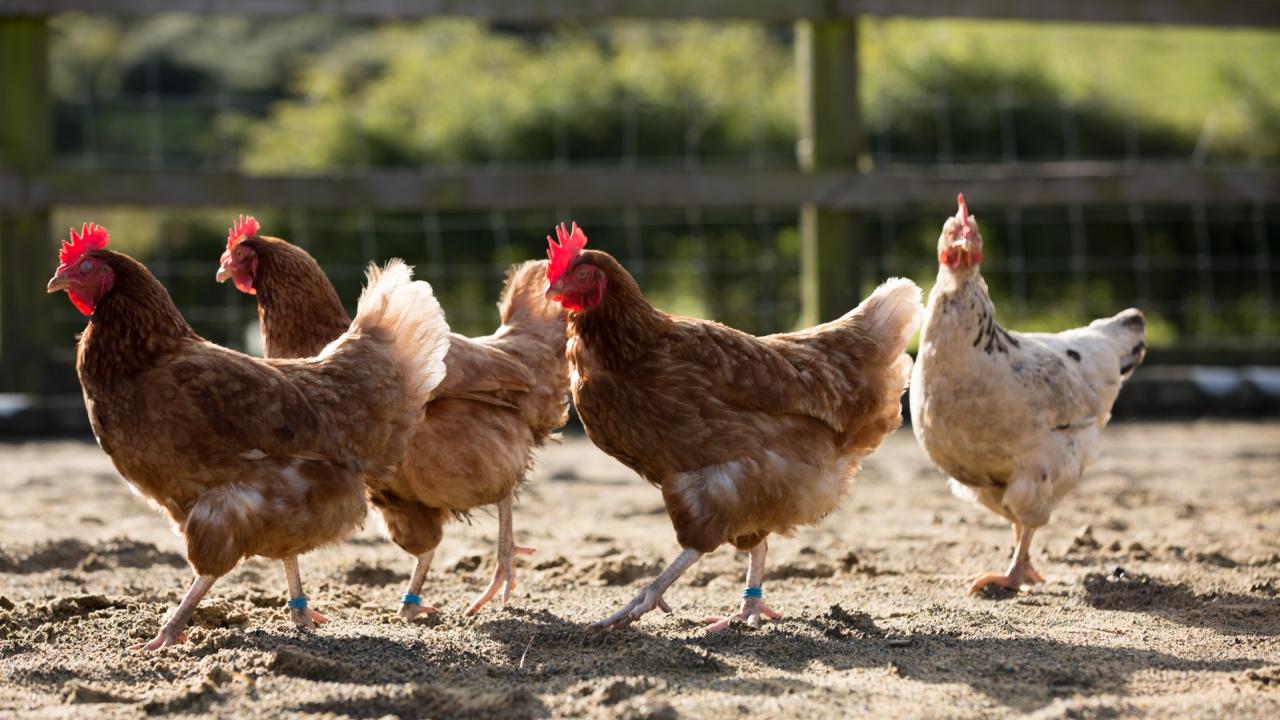

Backyard poultry and small-scale livestock agriculture are a growing trend in the U.S., even in large cities such as Seattle, Portland, Denver and San Francisco. Residents raising backyard poultry and livestock do so for a variety of reasons such as access to locally sourced food, companionship and sustainability. But how often do these owners seek veterinary care in these urban and peri-urban areas (UPAs)?
A Western Regional team of collaborators, including UC Davis researchers, conducted a survey of veterinary practitioners to better assess their engagement with owners of these animals. They received responses from 880 veterinarians in California, Colorado, Washington and Oregon. Most respondents reported working in companion animal only or companion animal predominant practices. Although most of the veterinarians perceived an increase in backyard poultry and livestock in their practice areas, few were actively treating such animals primarily because of a lack of facilities, interest or experience.
Their findings, published in the July 15th issue of the Journal of the American Veterinary Medical Association, indicate an increasing demand for veterinary services for poultry and livestock in peri-urban areas, and a need for ongoing continuing education of practitioners, as well as the animal owners.
“This segment of agriculture has been largely overlooked by the veterinary community in North America,” said Dr. Alda Pires, University of California cooperative extension specialist in the UC Davis School of Veterinary Medicine and co-principal investigator in the study. “Due to the potential for public health issues and the spread of zoonotic disease, veterinary professionals need increased training and better awareness of the health and welfare of these animals.”
Dr. Ragan Adams, veterinary extension specialist at Colorado State University and a co-principal investigator emphasized that the animal owners also need better awareness of the importance of regular veterinary care and a willingness to pay for that medical expertise.
“Many of these owners are unfamiliar with the responsibilities and challenges of owning poultry and/or livestock,” Adams said. “County Extension personnel can teach the new animal owners as they have taught youth in 4-H programs for more than 100 years. With enhanced knowledge about animal husbandry, the new owners will understand the importance of seeking veterinary services when their animals show signs of illness.”
Disease spread from these peri-urban areas can spell disaster for other animals. For example, the 2015 outbreak of highly pathogenic avian influenza, traced to backyard poultry flocks, had severe economic and trade consequences for the commercial poultry industry. Recent outbreaks of virulent Newcastle disease in California also posed significant threats to commercial poultry flocks and the agricultural economy.
“The health and welfare of animals in UPAs are of concern because their owners often lack the knowledge or expertise regarding safe handling and animal husbandry,” said Dr. Dale Moore, Washington State University Veterinary Medicine Extension specialist and co-investigator.
“A previous survey found that the owners want more access to livestock and poultry medicine. This follow-up survey highlights the need for veterinarians, along with extension specialists to work with small-scale poultry owners to improve biosecurity measures, better detect disease and mitigate potential future outbreaks.”
The original study ideas for these surveys came from Washington State University Veterinary Medicine Extension (Drs. Dale Moore and Amos Peterson) as part of Peterson’s Master’s Thesis project. The project was then extended to Veterinary Medicine Extension in California (Drs. Pires, Jerome Baron and Beatriz Martinez-Lopez), and at Colorado State University (Dr. Ragan Adams). Extension educators at Oregon State University and the Oregon Veterinary Medical Association helped with contacts in their states.
The increase in popularity of backyard and peri-urban agriculture provides both challenges and opportunities for veterinarians. Providing veterinary service to owners of backyard poultry and livestock, who often view their animals as pets rather than production animals, requires a different approach and some different skills than providing veterinary service to owners of conventional or commercial livestock operations.
Study authors suggest a new model of practice might be envisioned for urban and peri-urban poultry and livestock clientele to ensure the health and welfare of their animals, and to safeguard public health. Specific opportunities for the veterinary profession are to identify local or regional veterinary service needs for these owners, become equipped to address exotic or zoonotic disease detection and husbandry questions, and provide medical care as well as food safety advice.







